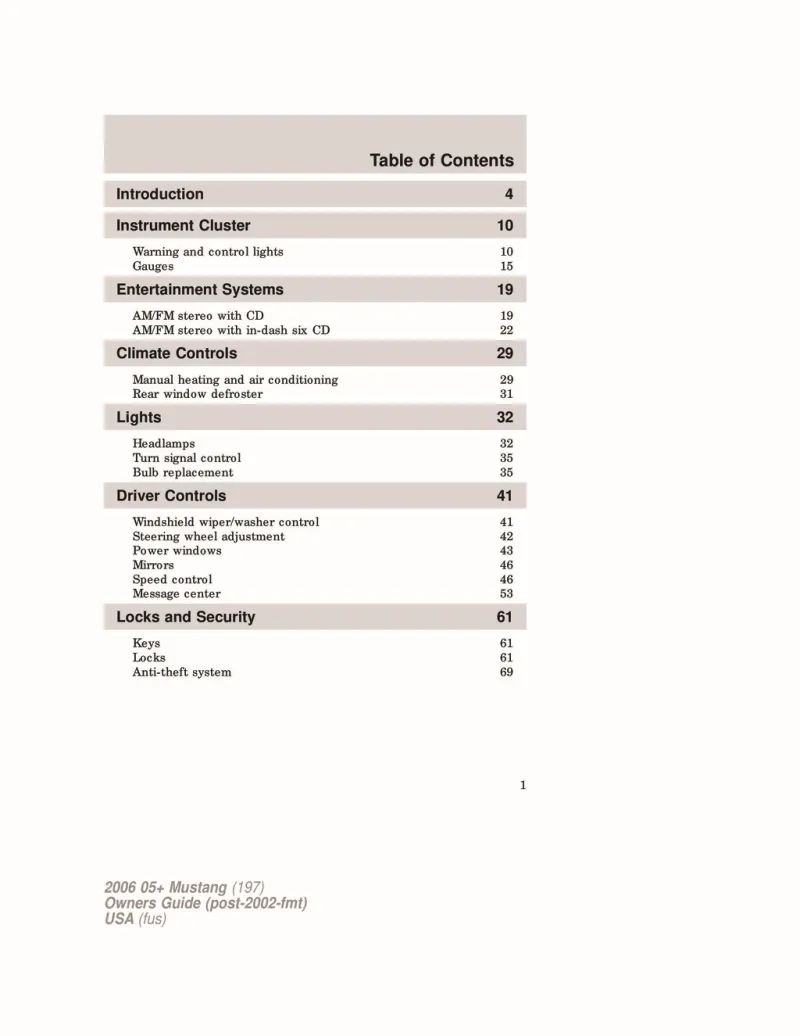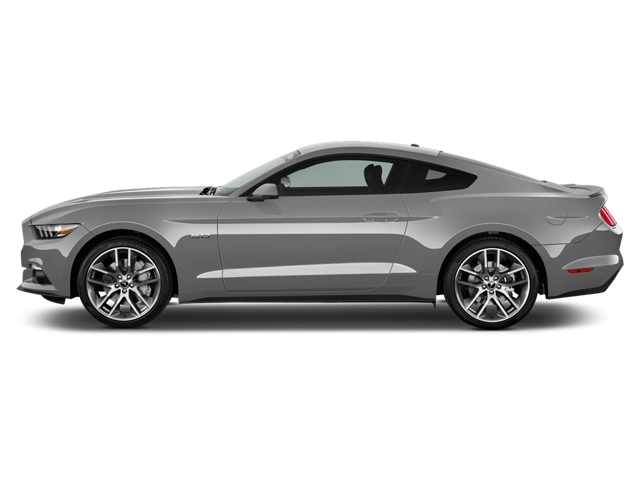2006 Ford Mustang Owner's Manual

Table of Contents
2006 Ford Mustang Overview
Introduction
The 2006 Ford Mustang reignites the spirit of classic muscle cars, delivering a perfect blend of retro charm and modern performance. With a striking design that pays homage to its storied past, this Mustang captivates enthusiasts and casual drivers alike. The 2006 model year continues to build on the fifth generation's legacy, offering an engaging driving experience that remains uncompromised by contemporary conveniences and safety standards.
Powertrains
The 2006 Mustang boasts an exhilarating lineup of powertrains designed to suit various driving preferences. Base models come equipped with a robust 4.0-liter V6 engine that produces 210 horsepower and 240 lb-ft of torque, offering an ample combination of performance and efficiency. For those seeking muscle, the legendary 4.6-liter V8 engine intrigues with a thrilling output of 300 horsepower and 300 lb-ft of torque, allowing for an unforgettable driving experience. Coupled with a choice of either a smooth-shifting five-speed manual or a responsive five-speed automatic transmission, the 2006 Mustang caters to diverse driving styles.
Trims
Features
Comfort and technology are not overlooked in the 2006 Mustang. Standard features include air conditioning, keyless entry, and a four-speaker sound system, while available options expand to luxurious leather upholstery, premium audio systems, and a state-of-the-art navigation system. Safety features, such as front airbags and anti-lock brakes, further enhance the model's appeal and ensure peace of mind while cruising.
Owner's Manual
The owner's manual for the 2006 Ford Mustang serves as an indispensable guide for both seasoned and new Mustang enthusiasts. It provides crucial information about vehicle maintenance, operation, and safety guidelines, empowering owners to care for their prized possession properly. By following the owner's manual, drivers can keep their Mustang in peak condition, ensuring many thrilling miles ahead.
User manual download
The Ford Mustang owner manual for the 2006 model year is to be found in PDF downloadable format on this page. The owner manual for the model year 2006 is free and in English, but the repair manuals are usually not easy to get and may cost more.
Manual Questions
Fill the form below and someone will help you!

